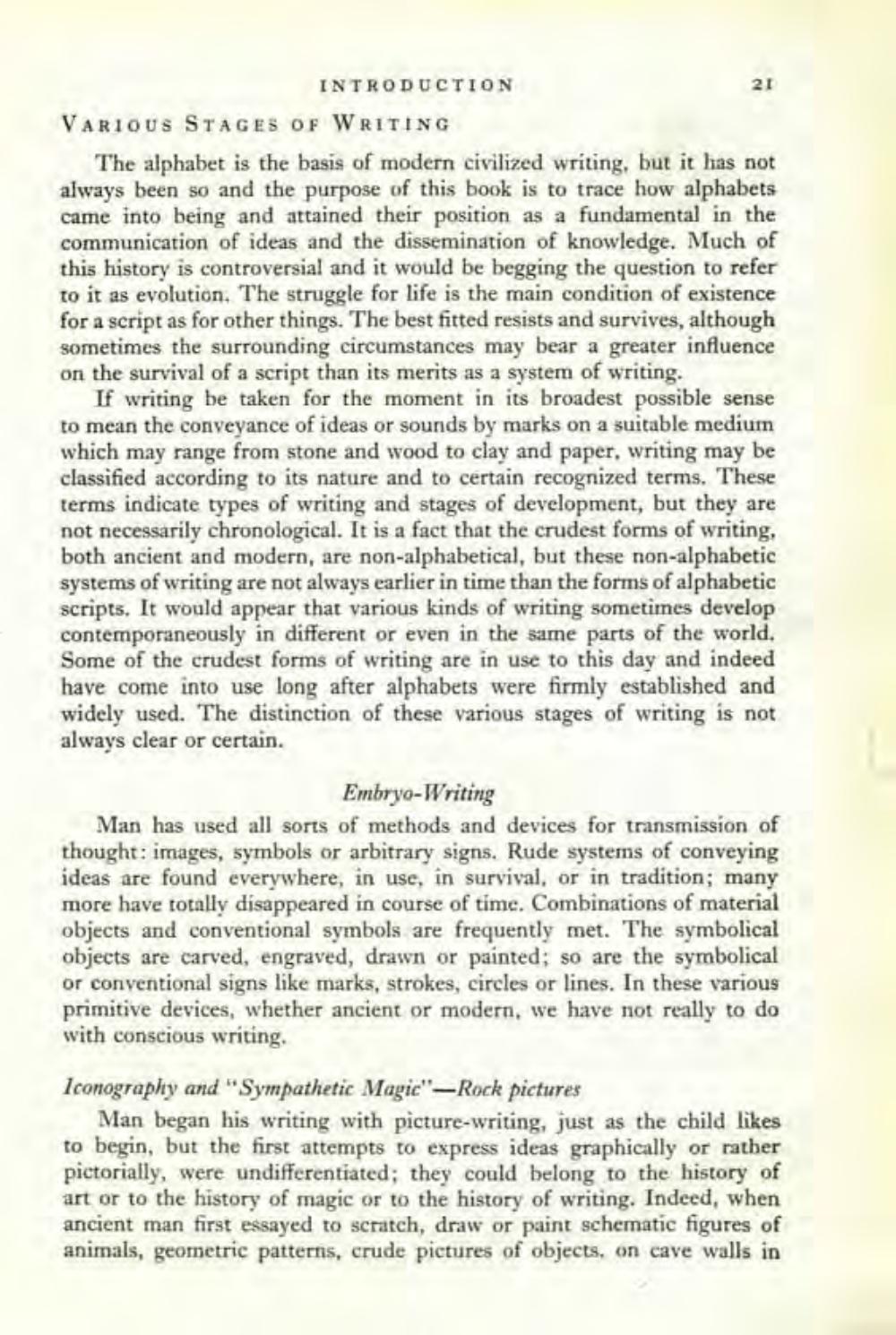________________
INTRODUCTION
21
VARIOUS STAGES OF WRITING
The alphabet is the basis of modern civilized writing, but it has not always been so and the purpose of this book is to trace how alphabets came into being and attained their position as a fundamental in the communication of ideas and the dissemination of knowledge. Much of this history is controversial and it would be begging the question to refer to it as evolution. The struggle for life is the main condition of existence for a script as for other things. The best fitted resists and survives, although sometimes the surrounding circumstances may bear a greater influence on the survival of a script than its merits as a system of writing.
If writing be taken for the moment in its broadest possible sense to mean the conveyance of ideas or sounds by marks on a suitable medium which may range from stone and wood to clay and paper, writing may be classified according to its nature and to certain recognized terms. These terms indicate types of writing and stages of development, but they are not necessarily chronological. It is a fact that the crudest forms of writing, both ancient and modern, are non-alphabetical, but these non-alphabetic systems of writing are not always earlier in time than the forms of alphabetic scripts. It would appear that various kinds of writing sometimes develop contemporaneously in different or even in the same parts of the world. Some of the crudest forms of writing are in use to this day and indeed have come into use long after alphabets were firmly established and widely used. The distinction of these various stages of writing is not always clear or certain.
Embryo-Writing
Man has used all sorts of methods and devices for transmission of thought: images, symbols or arbitrary signs. Rude systems of conveying ideas are found everywhere, in use, in survival, or in tradition; many more have totally disappeared in course of time. Combinations of material objects and conventional symbols are frequently met. The symbolical objects are carved, engraved, drawn or painted; so are the symbolical or conventional signs like marks, strokes, circles or lines. In these various primitive devices, whether ancient or modern, we have not really to do with conscious writing.
Iconography and "Sympathetic Magic"-Rock pictures
Man began his writing with picture-writing, just as the child likes to begin, but the first attempts to express ideas graphically or rather pictorially, were undifferentiated; they could belong to the history of art or to the history of magic or to the history of writing. Indeed, when ancient man first essayed to scratch, draw or paint schematic figures of animals, geometric patterns, crude pictures of objects, on cave walls in




